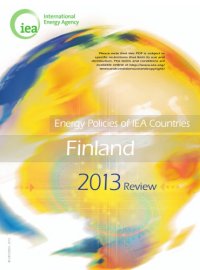Finland's economy is highly industrialised. Yet with over one-third of its territory located above the Arctic Circle, the country is largely rural and sparsely populated, except for its southern tip. With its energy-intensive industries and its cold climate, Finland's energy consumption per capita is the highest in the IEA. Finland is highly dependent on imported fossil fuels, and energy policy is at the heart of the government's concerns. The government's energy strategy aims to strengthen Finland's energy security, to move progressively towards a decarbonised economy, and to deepen its integration in the wider European market. Finland has a very ambitious renewable energy programme, with a view to producing 38% of its electricity from renewable sources by 2020. Finland is the most forested country in Europe; biomass will thus play a central role in meeting the target Finland is one of few IEA countries with plans to expand its nuclear capacity, and the Parliament has approved the construction of two more nuclear power plants. If all planned projects are completed, the share of electricity produced by nuclear could double by 2025, reaching around 60%. This would contribute to diversifying Finland's energy security and meeting its low-carbon objectives. Also, Finland participates in the Baltic Energy Market Interconnection Plan (BEMIP), which aims to further regional integration through EU-supported infrastructure projects. This review analyses the energy policy challenges facing Finland, and provides sectoral studies and recommendations for further policy improvements. It is intended to help guide the country towards a more secure and sustainable energy future. Read more...
